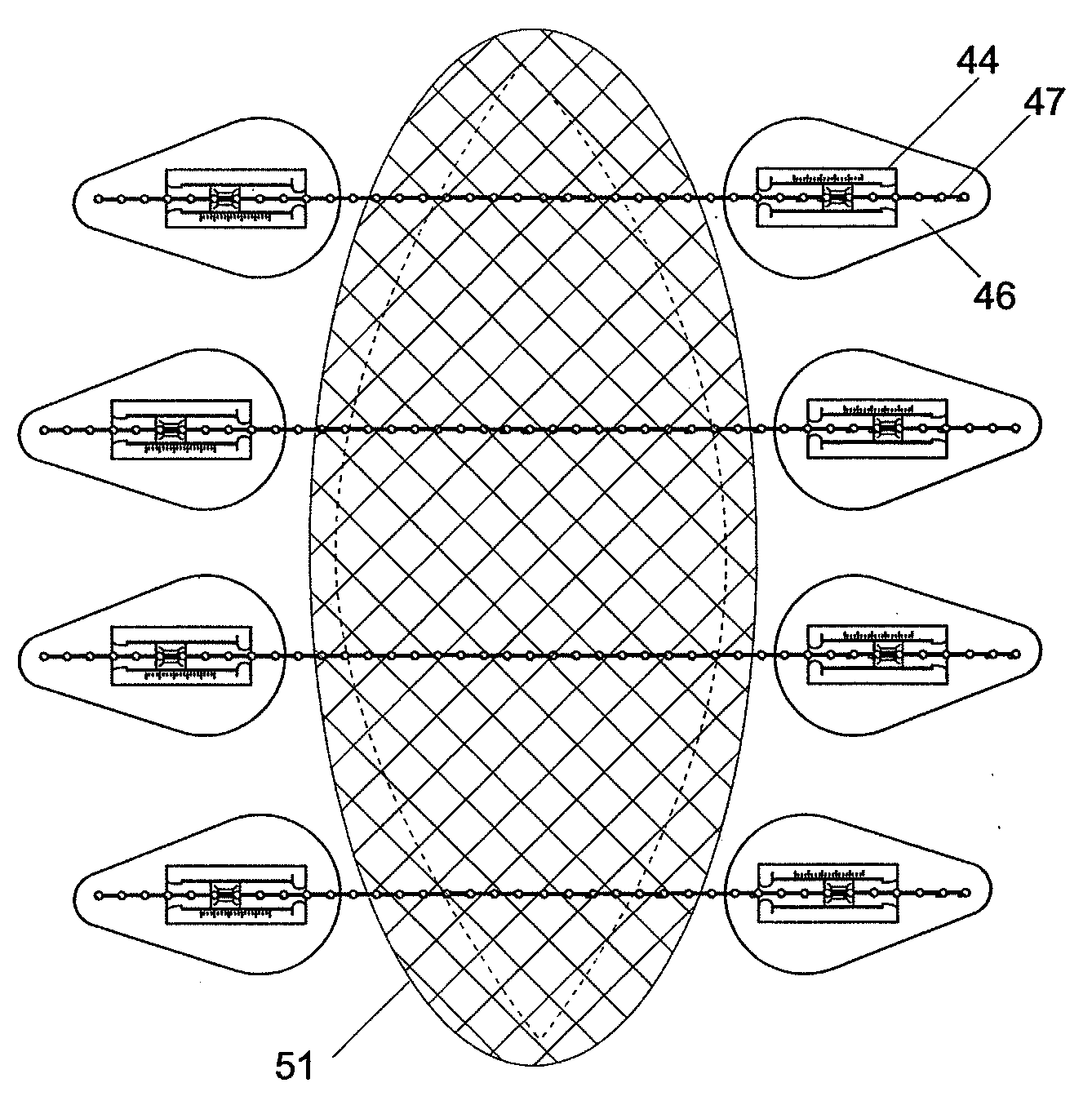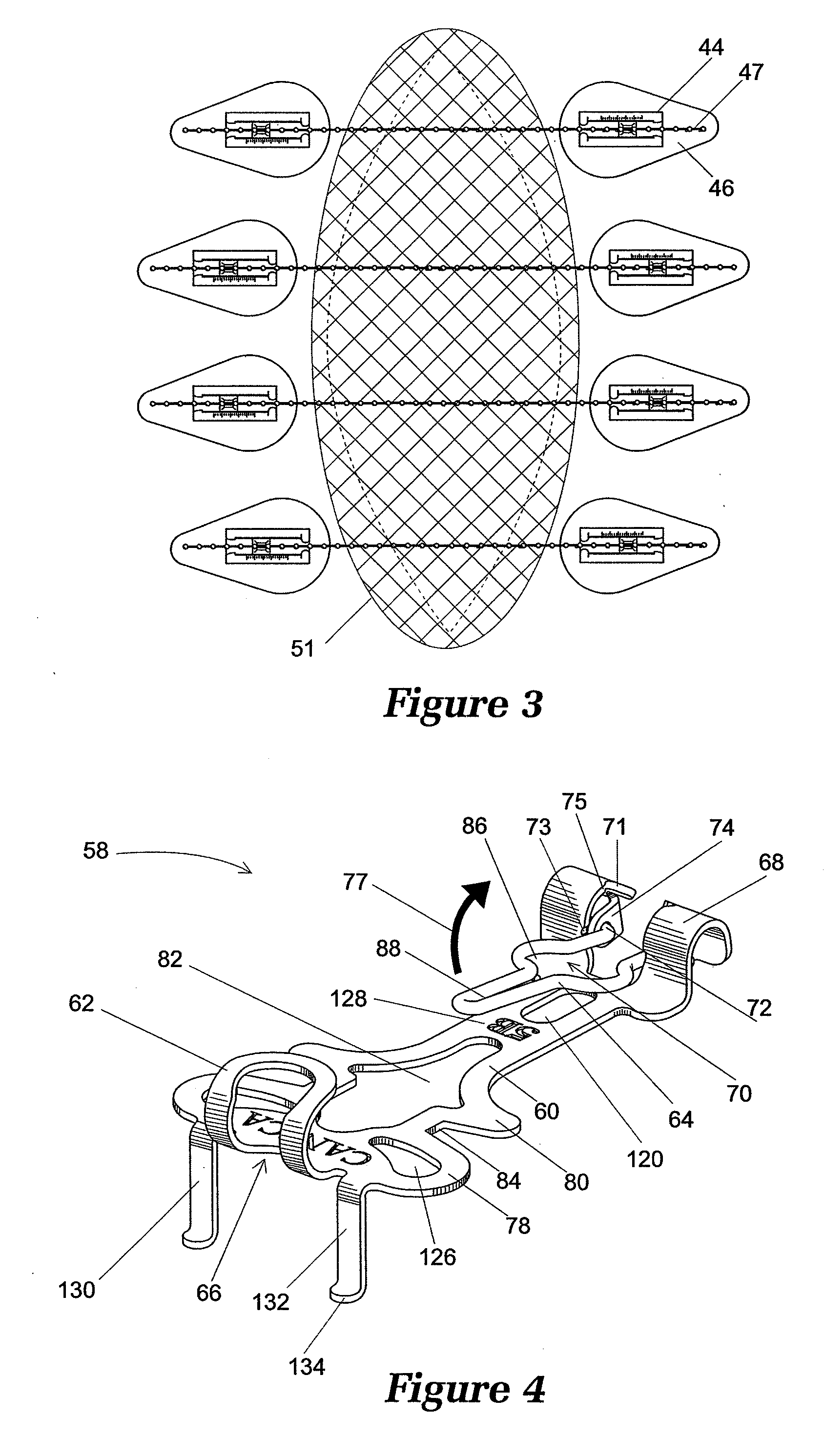Clinical and Surgical System and Method for Moving and Stretching Plastic Tissue
a plastic tissue and surgical system technology, applied in the field of systems and methods for moving and stretching plastic tissue, can solve the problems of poor force distribution across the tissue, inability to adjust the force exerted by the suture, and rudimentary coupling work poorly, etc., to achieve simple or complex geometry, simple or complex structure, and constant force or tension
- Summary
- Abstract
- Description
- Claims
- Application Information
AI Technical Summary
Benefits of technology
Problems solved by technology
Method used
Image
Examples
Embodiment Construction
I. Force Applying Components
[0043]Force applying components of this invention can integrate energy storage and force transmission, such as in an elastomeric rod, or can separate energy storage and transmission as in a spring connected to a cable.
[0044]A. Integrated Force Applying Components
[0045]An integrated force applying component according to this invention may be formed in rods, cords, bands, loops, sheets, nets, wires, strands, cables, tubes or other suitable structure. In one embodiment, the fac is an elastic tube that flattens out at the point of maximum load and becomes load dissipating. This tubular force applying component may be adapted to slide over the end of a trocar, allowing the force applying component to be driven through the tissue. For example, a force applying component may be driven through the wound edge using a trocar to prevent eversion. In an alternative embodiment, a rod-shaped force applying component is driven through the tissue using a needle swaged on...
PUM
 Login to View More
Login to View More Abstract
Description
Claims
Application Information
 Login to View More
Login to View More - R&D
- Intellectual Property
- Life Sciences
- Materials
- Tech Scout
- Unparalleled Data Quality
- Higher Quality Content
- 60% Fewer Hallucinations
Browse by: Latest US Patents, China's latest patents, Technical Efficacy Thesaurus, Application Domain, Technology Topic, Popular Technical Reports.
© 2025 PatSnap. All rights reserved.Legal|Privacy policy|Modern Slavery Act Transparency Statement|Sitemap|About US| Contact US: help@patsnap.com



